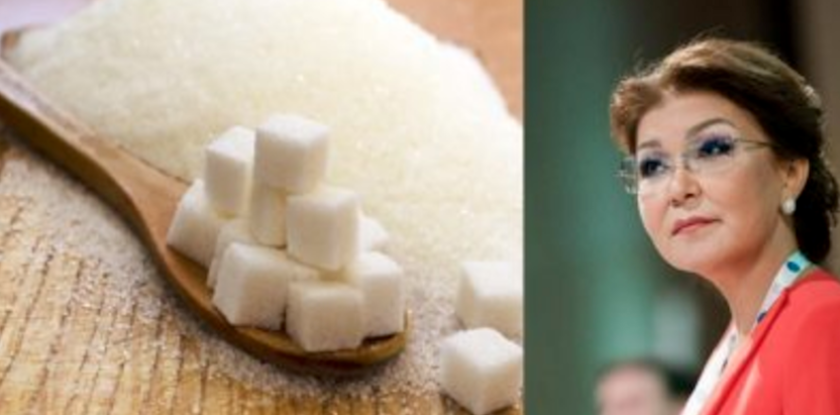The court debates on the legality of the funds used to purchase the London real estate of the family of Kazakhstan’s First President’s eldest daughter Dariga Nazarbayeva have ended in the victory of the latter. She has managed to convince the London court that the money was received as a result of her Kazakh assets sale to third parties.
And that these assets originated from the honest business operations of Dariga Nazarbayeva herself and her late husband Rakhat Aliyev.
The rest — the mechanisms and the particulars of the real estate purchases as well as the methods of the purchases — is irrelevant and can, in no way, affect the core of the matter. What counts the most is that Kazakhstan’s Public Prosecution Office has confirmed the legality of the funds’ origin.
Today, the questions of how the capital of Rakhat and Dariga’s family had been formed in Kazakhstan as well as in which projects this capital had been invested in the West concern different people for different reasons. But what primarily interests the Kazakh society as a whole is to learn what has happened to the assets sold to the third parties.
Who are these third parties, why have they bought the assets and what’s happened to them after that? These are the questions we have been asking in the course of our investigation.
The results of the investigation can be defined as surprising and, at the same time, quite predictable. We have learned that the assets had never left the scope of the Nazarbayev «big» family business. Moreover, the assets were continued to be used albeit not for the business purposes but for the purposes of obtaining all kinds of loans and governmental subsidies.
Currently, the business no longer exists and all the money pumped into it through bank loans had gone without a trace. However, no one is in a hurry to look for this money.
What the NCA investigators have found out
First of all, let us recall the nature of the complaints filed by the UK National Crime Agency (NCA) against Dariga Nazarbayeva and her son Nurali Aliyev.
The investigators believed that Dariga Nazarbayeva’s family owned three groups of real estate objects in London and she was to explain the origin of the funds used for their purchasing. We are talking about:
- the mansion at 32 Denewood Road (registered for Villa Magna company);
- the mansion at 33 The Bishops Avenue (registered for companies Manrick Private Foundation and Alderton Investments);
- apartments at 21 Manresa Road (registered for Tropicana Assets Foundation company).
The demands of the NCA to Dariga Nazarbayeva were based on the following.
- The real estate in London was purchased for the purpose of the laundering of the money obtained as a result of Rakhat Aliyev’s illegal activities.
- The members of Rakhat Aliyev’s family were involved in the laundering of the funds obtained via criminal means.
- The physical bodies that had purchased the real estate in London were the family’s agents and completed the transactions on behalf and on the money of Dariga Nazarbayeva.
- The legal bodies involved in the transactions were created in the offshore jurisdictions in order to hide the names of the real owners, in other words, of Dariga Nazarbayeva and her family members.
A Heiress
And now let us turn to history.
On June 29, 2007, Dariga Nazarbayeva became the blessed owner of 5.214.270 shares of Kant JSC that she «inherited» from her former husband Rakhat Aliyev who, even though he was still alive back then, turned out to be a defector having joined the active fighters of his father-in-law’s political regime.
Kant JSC had served as a legal cover for the Dzhambyl sugar factory that was a part of the «Sakharny Centre» — the sugar monopoly created by Rakhat Aliyev’s group back in 1990s. Of course, the methods of its creation were borrowed not from the business magazines such as Harvard Business Review but from the business practices of the Rockefeller era that had been well documented by the American investigative journalists of that time and then retold in the Soviet books on the capitalist monopoly.
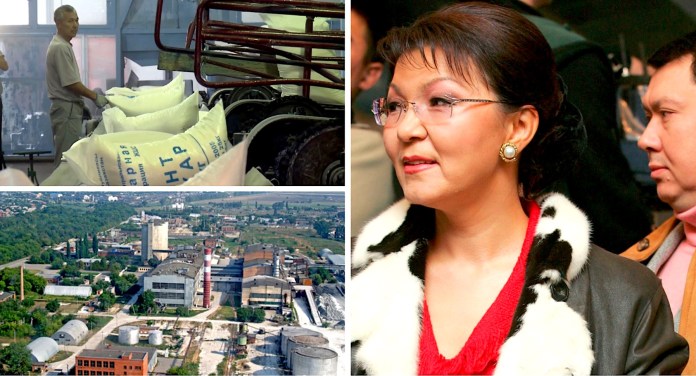
The stock-transfer deal (filed under an act of gift) looked very strange considering that, in Kazakhstan, Rakhat Aliyev’s business had already been deemed illegal at the time. In theory, it means the confiscation of all of his assets. In practice, as we can see, certain assets turned out to be related to Dariga. The transaction was reflected in the 2007 Kant JSC report published on the KASE website.
Together with the shares, Dariga Nazarbayeva had got a minority partner. 23,9% of Kant’s shares was owned by Kassem Omar, a relative and a trusted person of Issam Khurani (Rakhat Aliyev’s brother-in-law). Later, the Khurani family got involved in a series of international legal debates with participation of Dariga Nazarbayeva since a number of their Kazakh assets was confiscated by Akorda.
On the other hand, the Kant neighbourship of Omar and Nazarbayeva was short. Dariga Nazarbayeva had divided her shares into two parts. The biggest one (3 036 367 shares) she transferred to the Central Securities Depositary. The rest (2.177.903 shares) she sold to the UK corporation Beatrice Alliance Ltd.
Note that the sale was dated by November 23, 2007, while Beatrice Alliance Ltd was registered on May 24, 2007 — half a year prior to the transaction and a month before Dariga received «the inheritance» from her ex-husband. So there are high chances that the UK corporation was purposefully created for the Kant transaction alone.
After the transaction, the structure of Kant’s capital looked as follows. Through the Depositary, Dariga Nazarbayeva owned the main (but not controlling) stake of 44%. Kassem Omar owned the same 23,9%. Beatrice Alliance Ltd. owned the remaining 31,6%. However, soon the British corporation became Kant’s majority shareholder. Its share grew up to 55,4%. Most likely, it happened due to the decreasing of Kassem Omar’s share since the share of Dariga Nazarbayeva had not changed and was transferred into the ownership of GAS DEVELOPMENT LLP.
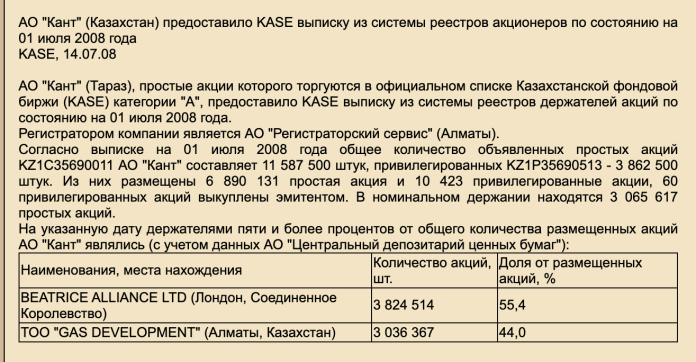
And, in 2012, GAS DEVELOPMENT LLP became Kant’s sole owner.

By that time, Beatrice Alliance Ltd. had ceased to exist. The company was liquidated in the fall of 2010. Either, it had completed its mission or the initial plan of turning it into «Rakhat Aliyev Sugar Trust’s» shareholder had undergone some radical changes.
We have asked ourselves what was this mysterious company that saw the light of day in 2007 and ended its existence soon after the Kant JSC transaction? And also, who was behind it?
The liquidation of the company resulted in the disappearance of the legal bodies from the UK databases. Nonetheless, it still managed to leave a small information trail on the Internet. This trail allows us to speak of the purely technical nature of the company — over the course of its existence, the biggest part of its administrators consisted of purely technical parties whose surnames mean nothing. All except one. Beatrice Alliance Ltd.’s latest chair MS. DINA USKENOVNA ABDYKALYKOVA.
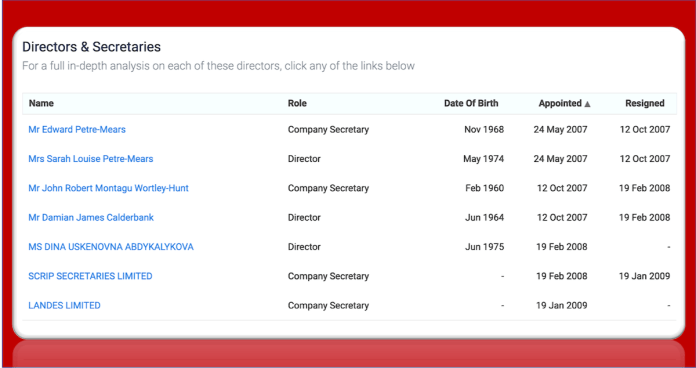
Sugar Delta
At the beginning of 2007, when the history of the complicated relationships of Rakhat Aliyev, Akorda and Nazarbayev entered the final straight, Dina Abdykalykova was serving as the COO of Bank TuranAlem. However, in June 2007, when Dariga Nazarbayeva already got her «legacy», Dina Abdykalykova became the Chairperson of the Management Board of Neftebank.
Registered in 1993 in Aktau, the bank was moved to Almaty in 2007 and changed its name to Delta Bank. The dates of the move and the name change were not random: the bank had become the financial centre of the new sugar monopoly created on the debris of the Sakharny Centre. This can be seen from the list of the founders: among them, we can find the people close to Akhmetzhan Esimov (back then, the Minister of Agriculture, now the Chairman of the Management Board of NWF Samruk-Kazyna JSC) and the Kazkommertsbank team.
(Note that Akhmetzhan Esimov is Nursultan Nazarbayev’s nephew and, therefore, Dariga Nazarbayeva’s relative).
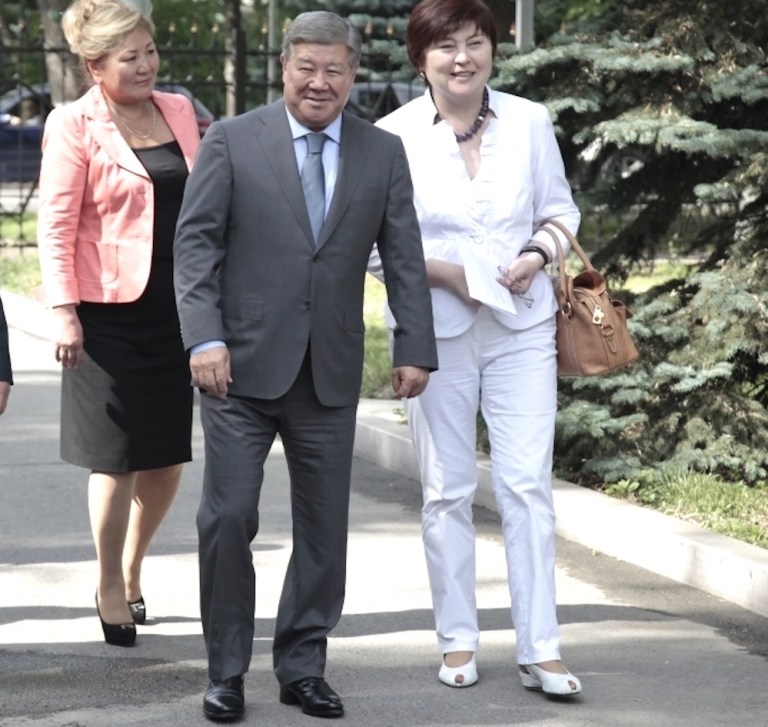
Akhmetzhan Esimov
Initially, Galimzhan Esenov, Akhmetzhan Esimov’s son-in-law (married to his youngest daughter Ayzhan) and a grandson of former President of the Kazakh SSR Academy of Sciences Shakhmardan Esenov, was this bank’s majority shareholder. However, in 2010, Esenov transferred his 25,55% share to his mother Shagizat Esenova. This transaction was of a purely technical nature since, in March 2013, Esenov, Jr. became the «buyer» of ATF Bank sold to him by Italian UniCredit Bank for 500 $ mln — less than a quarter of the amount (2.1 $ bln) for which it bought the bank in 2007 from Kazakh oligarch Bulat Utemuratov.
The open sources explain the loss of UniCredit via an unfortunate combination of factors on financial markets. However, one way or another, these factors allowed the trusted persons of the Nazarbayev family to register more than one and a half billion dollars of legal (in the Western financial system) income.
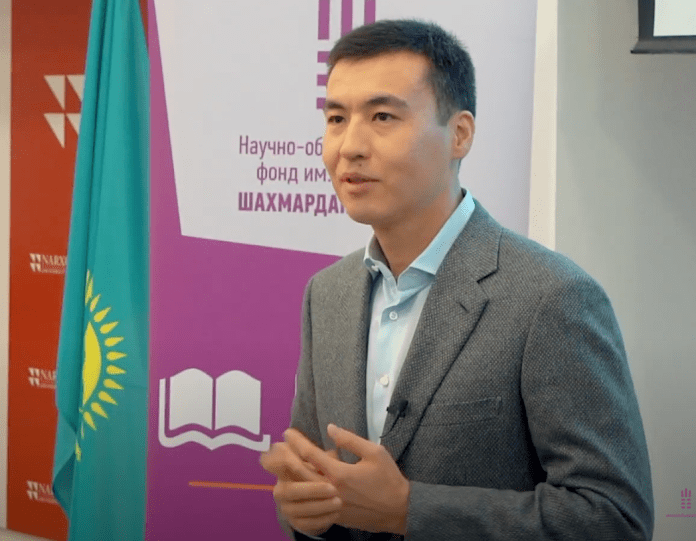
Galimzhan Esenov
Thus, Galimzhan Esenov became a banker «as the occasion demanded». The owning of the chemical business structured into Kazfosfat LLP was, for him, a much more profitable undertaking. The corporation included the Novodzhambyl phosphorus plant, a mineral fertilisers plant, the Karatau mining complex, the Chulaktau mining complex, a railway transportation complex, a chemical plant and a cleaning agents production facility (Taraz, Zhanatas, Karatau, Stepnogorsk and Shymkent).
Esenov controls these assets through British corporation KAZPHOSPHATE LIMITED. The aforementioned Dina Abdykalykova had served as its director from February 2008 until August 2011.
The sugar interests tied Galimzhan Esenov to his uncle, Sultan Esenov, who controlled Almatinky Sakhar JSC that once was a part of Rakhat Aliyev’s sugar empire.
Another 6,57% of Delta Bank’s shares ended up in the hands of Erbol Tynbayev, a Vice President of Asia Sakhar JSC and an active participant of the Kazkommertsbank Group’s business-projects.
In 2006, Zangar Invest Group (a part of the Kazkommertsbank empire) owned 100% of the Asia Sakhar shares. However, already in 2007, the shares ended up in the hands of INTERSUGAR LLP that, in a year, shared the controlling stake (65%) with Keremet Service LLP. From 2008 to 2012, the balance of power remained the same until the company had ceased to exist. While there is no exact information on the ownership of Keremet Service, INTERSUGAR is a completely different matter. We will come back to it later.
Finally, 9,46% of Delta Bank’s shares belonged to Murat Medeuov who, simultaneously, was serving as the director of GAS DEVELOPMENT LLP that, as you recall, became the owner of Kant JSC.
Therefore, we can state with certainty — there was no sale of the assets. It was a technical transaction that allowed to move the money needed to resolve different family issues to the West. The real sugar assets had remained in the «family» and were managed by the trusted persons from among the relatives.
However, this sugar case has demonstrated yet another salient feature of family business in Kazakhstan.
Sakharny Centre 2.0
The concentration of the sugar interests in Delta Bank looks like a classic example of financial capitalism of the start of the 20th century. The point was to concentrate the industrial sectors in the hands of a small group of influential people and to establish financial control over the industries. In this situation, banks lose their loan-providing function and turn into financial institutes that control all the movements of the monetary resources in the system.
However, this comparison is only true in form. With all the negative features, the financial capitalism of the start of the 20th century allowed for the assets to be developed. Banks could mobilise the capital and provide funding to industries when the latter were unable to obtain loans on usual terms, but all this was done for the purpose of development and the strengthening of the competitive position on the market. Even if, for that to happen, they would have to destroy that same market replacing it with a mutual agreement of the parties or with a monopoly.
In Kazakhstan, the financial concentration allowed not to develop but to control the monetary flows for the benefit of the interested parties. With the help of special banks, the money could be moved into a group of companies and then again moved out if the necessity arose. Especially since such assets, with their political levers of power, could be defined as strategically important. This meant that, in order to develop them, one would obtain state subsidies that then disappeared in the trusted banks.
This is exactly how the story of the sugar monopoly created in Kazakhstan in 2009 and called «The Central Asian Sugar Corporation» (CASC) unfolds. It united all the important sugar assets of Kazakhstan: Kant JSC, Almatinky Sakhar JSC, Almaty Kanty JSC, Asia Sakhar JSC, Koksu-Sheker JSC. Delta Bank served as a means of control of this system. This is how the Nazarbayev family and its immediate circle had managed to establish the sugar monopoly that Rakhat Aliyev was trying to create back in the 1990s.
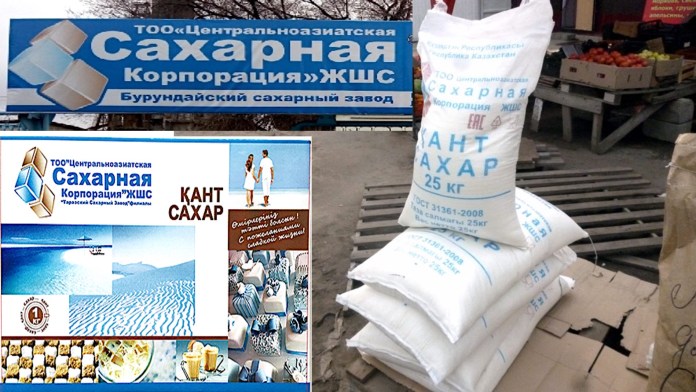
The fact that it was a true monopoly is clear from the suggestion the Agency of the Republic of Kazakhstan for Competition Protection made in 2015 when it proposed to examine a possibility of demolopizing the CASC.
As any other monopoly, the CASC represented a system capable of squeezing any profit from the market albeit at the cost of development. This is exactly what happened in this instance.
The CASC’s surplus profits were guaranteed by a special agreement signed in 2009 while discussing the terms creating a single customs space on the territories of Russia, Belarus and Kazakhstan. It guaranteed that Kazakhstan would have a privileged duty-free regime of importing raw sugar to the country for the duration of 10 years — until 2019. In reality, it meant that Kazakhstan would be able to produce sugar from cane while Russia and Belarus were producing it from beet thus supporting their agricultural industry.
Naturally, as the agreement was being prepared, there was a lot of big talk that, during the privileged customs regime, Kazakhstan would be able to start growing beet in order to launch a full-scale production. Of course, none of that had been implemented. Starting from 2009, the beet planting acreage in Kazakhstan had been reducing despite the fact that the state provided the funds for Kazakhstan’s own raw-material base development.
Already in 2015, all the parties involved knew that the money was moving the wrong way. The media started saying that «if radical steps won’t be taken, after 2019, Kazakhstan’s sugar industry will die». However, at the time, the group of the Kazakh sugar patricians probably thought — after us the deluge! The only difference was that «after us» did not mean a physical death but the abandonment of the squeezed assets.
Delta Bank became the first victim of the collective abandonment. As follows from the KASE publications, in November 2017, 98,26% of its shares was already owned by Nurlan Tleubayev, an agricultural oligarch who became a «star» after the Exclusive magazine wrote on his suicide attempt in December 2016. In the end, however, it was the suicide of the bank, not the businessman. In November 2017, the National Bank of Kazakhstan revoked Delta Bank’s licenses. The reasons lied in a colossal percent of bad debts — 99,7% of the bank’s loan portfolio.
(By the way, the story of Tleubayev’s other bank, Kazinvestbank, of which he became the majority shareholder in 2016 unfolded according to basically the same scenario).
The further course of events was quite predictable. At the beginning of 2019, Russia spoke emphatically against Kazakhstan prolonging the duty-free import of white sugar from third countries. Russia considered it a violation of the EEU norms.
By that time, even the CASC had no money. Back in April of 2018, several months prior to the official termination of the duty-free regime, the company was unable to pay for a delivery of raw material. As a result, two ships carrying raw sugar for the company got stuck in the Novorossiysk water area. The company stopped answering its phones. Now it is living a kind of otherworldly life and does not even have a corporate website.
The Russian Karavay*
Let us digress a little. At the start of the 2000s, not only did Rakhat Aliyev try to gather the Kazakh assets in a single «fist» but wanted to solidify himself on the Russian market in order to control a small albeit an influential sector of a big market. In December 2002, a Taganrog company Karavay Plus LLC bought ten elevators and eight sugar factories (three in the Belrorod region, two in the Orel region and five in Krasnodar Krai) from the Obyedinennaya Prodovolstvennaya Companiya (United Food Cpmpany) for 80 $ mln. The OPC was a part of the Alfa-Group. However, already in 2003, Karavay Plus started liquidating the acquired assets having kept only four Krasnodar industries: Izumrud, Girkubs, Pavlovsky and Kanevsky. At the time, these were the best sugar factories in Russia.
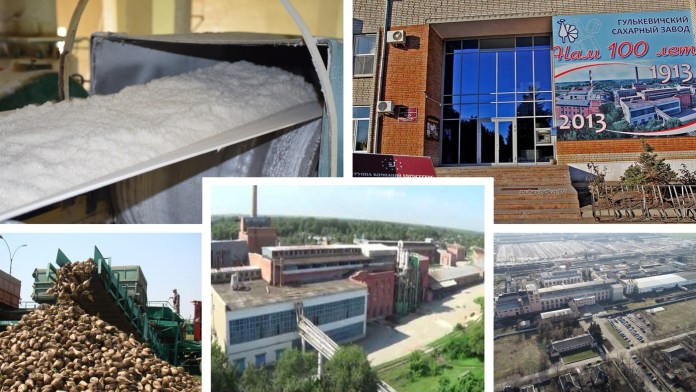 Sugar Production in Krasnodar Krai
Sugar Production in Krasnodar Krai
At the market, it was believed that Karavay Plus’ purchases were somehow connected and coordinated with the Glencor Corporation, an international trader that acted as Karavay Plus’ foreign partner. However, Karavay Plus started experiencing problems with another international company.
At the end of 2005, the holding’s owner Alexander Denisov was put on the international wanted list following the accusation of stealing raw sugar in the amount of 609 mln rubles from the Russian branch of Louis Dreyfus Trading Limited. This remarkable story started with a statement of Louis Dreyfus’ representatives and, eventually, led to the complex and intricate relationships between the international corporation and offshore company Intersugar Limited registered on Virgin Islands. The sugar was stored at Karavay’s four factories in Krasnodar Krai and in a Taganrog facility from where it had actually «disappeared». Who stole what from whom had never been completely clear; the same can be said about the names of Intersugar Limited’s owners. Karavay’s representatives believed that Louis Dreyfus’ attempt to take over the group’s sugar factories was at the core of the matter.
Be as it may but, at the end of 2005, all the four factories (Kanayevsky, Parvolsaky, Izumrud and Girkubs) were put up for sale and, eventually, ended up under the control of Bank TuranAlem’s structures. This bank used to provide loans to the company back in the Karavay times. Then, Igor Egarmin, the Managing Director of Sakharny Centre that included five of the eight sugar factories in Kazakhstan, suddenly appeared on the new Board of Direcotrs of Izumrud. Igor Egarmin was known as Rakhat Aliyev’s trusted manager.
Later, when the total war between Akorda and Rakhat Aliyev broke out, one of the pro-government information resource released an article that told about Aliyev «taking over"the sugar factories that belonged to Karavay Plus and his ownership of 10% of the shares of certain French international sugar trading giant. However, no proof or detail was provided.
Louis Dreyfus, despite being an international corporation, has French roots. Apart from that, the company has both a Russian and a Kazakh trail. After the death of her husband in 2009 from leukaemia, Margarita Louis Dreyfus (born Margarita Bogdanova) became the owner of the company. Her grandfather Leonid Bogdanov was the Chief Engeneering Officer at the Semipalaninskaya TTP in the 1930s. The mother of the future proprietress of a multi-billion fortune, Natalia, was born in Semipalatinsk as well.
All these particulars seem like a curios incident. Nonetheless, the aforementioned factories had, once again, become the property of… Karavay Plus. And then, in September 2006, were sold to company Euroservice that belonged to Konstantin Mirilashvili, a Georgian-born reputable entrepreneur from Saint-Petersburg.
All this asset circulation could have meant anything. However, Euroservice did not survive the 2008 crisis and, eventually, its assets ended up in the hands of Rosselkhozbank, the group’s biggest loan provider.
As for Mirilashvili, he has long established his permanent residency in Israel.
*Translator’s note: «karavay» is a traditional Russian loaf of bread
Intermediate Conclusions
When we started investigating the origins of Dariga Nazarbayeva’s capital, we did not think we would be able to elicit the real mechanisms of doing business in Kazakhstan. Usually, they are hidden from a casual observer; for this reason, it is difficult and sometimes even impossible to establish the non-market nature of a transaction in Western courts since no single proof of it exists and all the witnesses (including prosecutors) testify to the contrary.
The story we have told here shows quite vividly that, in the countries such as Kazakhstan that are ruled by the authoritarian political system and the super-presidential power vertical, any monopoly can only exist if the top of the political pyramid is involved in it.
This kind of monopoly is built according to the rules of the beginning of the 20th century. It is when in the centre of the system lies the bank that can be used for pumping money out of business in the most efficient way. The money then must be moved through London where they must be turned into real investments generating a small albeit legal income.
Singling out Dariga Nazarbayeva as an individual actor of this policy and business would be naïve (to say the least). In reality, she is but an element of the integrated system where each element is connected with another directly or via immediate circles. Pulling one element out without destroying the whole system is impossible.
In this regard, the current Kazakh matrix is reminiscent of the Soviet political system that collapsed as soon as they had tried to change its individual elements. Still, there are the obvious differences, and the crucial one is the factor on which the systemic connections rest. In the modern Kazakh system, two factors are of the utmost importance — familial ties and money. For the biggest part of national elite, the challenge lies in exiting the game at the right time since this is the only way to leave the matrix without losing the money. Obviously, exceptions happen but they do not change the general outlook of the world.
With that, let us bring this part of our investigation to a close. There is more to come.

